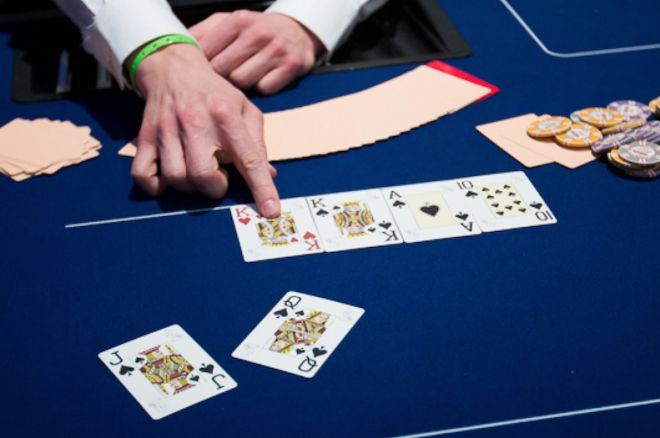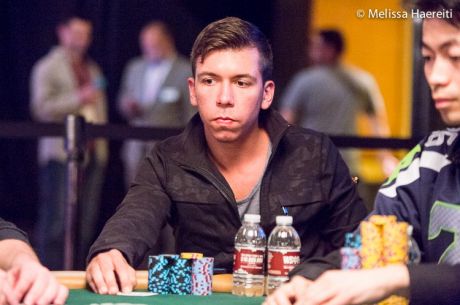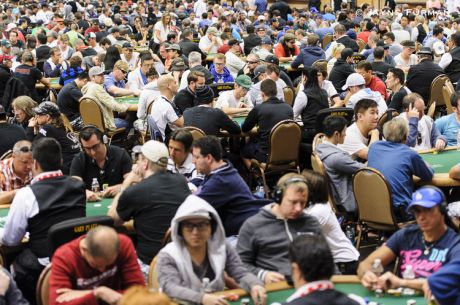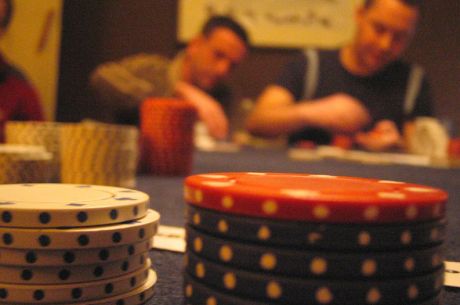Chasing Poker Room ��High Hand Bonuses�� -- Is It Worth It?

Low-stakes poker players in casinos love promotions, which allow them, if luck is on their side, to take home a lot more money than they could expect to win through straight poker.
I wrote for PokerNews a basic, introductory guide to the operation and rules of the most common types of promotions here. That guide, however, does not discuss how the presence of a promotion changes the dynamics of the poker game, and how one should alter strategy accordingly. That��s what I��d like to start addressing in this article.
Perhaps the most common promotion, at least in the Las Vegas card rooms, is a high-hand bonus. Typically if you have four of a kind or a straight flush or royal flush, using both hole cards, you win some cash. The amount might be fixed, might be determined by spinning a wheel, or might climb every day until somebody claims the bonus and then it gets reset to a baseline.
Let��s start with four of a kind. In order to claim the bonus, you��ll need to start with a pocket pair and have the other two cards of that rank appear among the five community cards. (Most promotions of this type exist only for Texas hold��em.) What is the probability of this happening?
Suppose I have 7?7?. Among the board of five community cards, the 7? and 7? will need to appear. Let��s assume I don��t care whether they come on the flop, the turn, or the river, so that we can ignore the possible orders in which the cards come. We need to calculate how many possible five-card boards there are, and how many of those contain both of the black sevens.
There are 50 unknown cards. How many different combinations of five cards can be picked from 50? The math is tedious but straightforward. If you want to explore the formula, you can consult this Wikipedia entry, but the quick answer is 2,118,760.
How many of these contain the black sevens? We can just specify that those two cards are on the board and ask how many possible combinations of the remaining three cards exist. That works out to 17,296.
Divide the two numbers, and we learn that about 1 out of every 122 possible boards contains the two cards that we��re looking for.
What is that worth? Suppose that the high-hand bonus being offered is $100. It might be more or less than that, but that��s a fairly typical amount. If you played every pocket pair to the river attempting to win that bonus, the additional equity your pair gains from the promotion is $100 distributed over 122 attempts, or less than $1 per hand.
Even at the lowest-stakes fixed-limit games, that amount is so small that it is completely dwarfed by the standard poker considerations of when a pocket pair is worth playing. Even if the bonus were $500, the equity per attempt would be just $4 �� again not enough that it should change how you play preflop.
What if you flop a set and hope to improve it to quads? Now you have two shots at getting one specific card. Each time, the probability is about 2%, for a combined probability of about 4%. Four percent of a $100 bonus is $4 worth of additional equity. In other words, flopping a set in a poker room with a $100 bonus for quads makes your hand worth, on average, $4 more than it otherwise would be. That might be enough to shift how you play in the very lowest stakes of fixed-limit games, but not when the blinds are higher, nor in any no-limit game.
In no-limit hold��em, your object needs to be capturing an opponent��s entire stack. Compared to that, the extra $4 of equity is negligible, and should not affect your play. Even if the room were offering $500 �� which doesn��t happen often �� the extra $20 of equity from the flopped set still should not distract you from the goal of stacking an opponent. It especially should not distract you from protecting your own stack from going to an opponent when the board texture and betting send a clear signal that your set is no good.
What about straight flushes? Poker rooms typically offer more for those than for quads, but they are correspondingly rarer. The math is harder to work out because it depends on what you start with. For example, with 10?9? there are four ways to make straight flushes, while with A?4? there is only one. But let��s take that 10?9? as an example.
I��ll cut straight to the answer, though the math and logic follow the same pattern as we used for the quads. There are again 2,118,760 possible five-card boards, of which 4,324 will contain one of the four three-card combinations that will complete a straight flush with 10?9?. That yields a probability of 0.2%. In other words, 10x9x-suited will turn into a straight flush about twice out of every thousand times you play them.
Suppose the casino offers $500 for making that straight flush. The equity that adds to your starting hand is then about $1. Again, it should be obvious that that is not enough incentive to alter how you play the hand. If you are tempted, say, to play 6?2? from early position in the hope of taking home a big jackpot, you are actually costing yourself money, because the amount you can expect to lose in the pot completely swamps your expected value from the bonus.
Bottom line: Unless high-hand bonuses are exceptionally large (i.e., into thousands of dollars), they are not worth chasing by deviating from what would otherwise be your optimal play. Think of the bonus as a nice little extra that you might get, rather than as something that you are actively pursuing.
I will occasionally revisit this general topic with analysis of how your play should change in the presence of other kinds of promotions.
Robert Woolley lives in Asheville, NC. He spent several years in Las Vegas and chronicled his life in poker on the ��Poker Grump�� blog.
Want to stay atop all the latest in the poker world? If so, make sure to get PokerNews updates on your social media outlets. Follow us on Twitter and find us on both Facebook and Google+!








